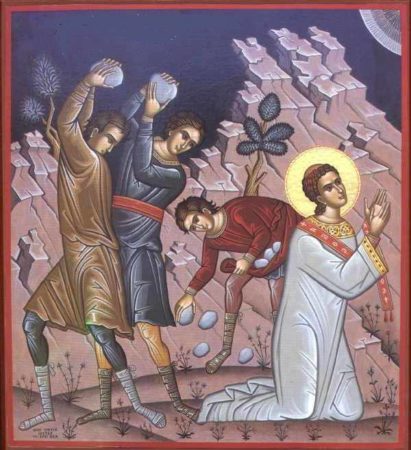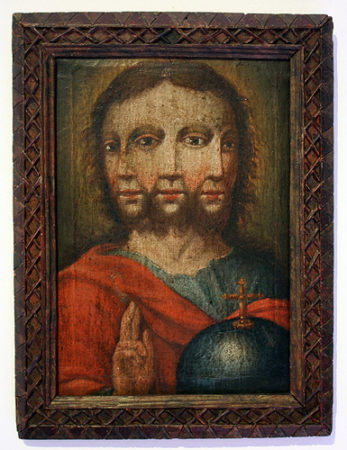Although there are so many triadic formulas in the New Testament, there is not a word anywhere in the New Testament about the ‘unity’ of these three highly different entities, a unity on the same divine level. … In Judaism, indeed throughout the New Testament, while there is belief in God the Father, in Jesus the Son and in God’s Holy Spirit, there is no doctrine of one God in three persons (modes of being), no doctrine of a ‘triune God,’ a ‘Trinity.’
 But how does the New Testament understand the relationship between Father, Son, and Spirit?
But how does the New Testament understand the relationship between Father, Son, and Spirit?There is probably no better story in the New Testament to show us the relationship of Father, Son and Spirit than that of the speech made by the protomartyr Stephen in his own defense, which has been handed down to us by Luke in his Acts of the Apostles. During this speech Stephen has a vision: ‘ But he, full of the Holy Spirit, gazed into heaven and saw the glory of God, and Jesus standing at the right hand of God; and he said, ” behold, I see the heavens opened and the Son of man standing on the right hand of God.”‘ [Acts 7:55-56] So here we have God, Jesus the Son of Man, and the Holy Spirit.
 But Stephen does not see, say, a God with three faces, far less three men in the same form, nor any triangular symbol of the kind that was to be used centuries later in western Christian art. Rather:
But Stephen does not see, say, a God with three faces, far less three men in the same form, nor any triangular symbol of the kind that was to be used centuries later in western Christian art. Rather:– the Holy Spirit is at Stephen’s side, is in Stephen himself. The Spirit, the invisible power and might issuing from God, fills him fully and thus opens his eyes: ‘ in the Spirit’ heaven opens to him.
– God himself (he theos = the God) remains hidden, is not in human form; only his ‘glory’ (Hebrew kabod, Greek doxa) is visible: God’s splendour and power, the brilliance of light which issues fully from him.
– Finally Jesus, visible as the Son of Man, stands (and we already know the significance of this formula) ‘at the right hand of God’: that means in throne communion with God, in the same power and glory. Exalted as son of God and taken up into God’s eternal life, he is God’s representative for us and at the same time, as a human being, the human representative before God.
… According to the New Testament the key question in the doctrine of the Trinity [i.e. the aforementioned triad] is not the question which is declared an impenetrable ‘mystery’… How three such different entities can be ontologically one, but the christological question how the relationship of Jesus (and consequently also of the Spirit) to God is to be expressed. Here the belief in the one God which Christianity has in common with Judaism and Islam may not be put in question for a moment. There is no other God than God! But what is decisive for the dialogue with Jews and Christians in particular is the insight that according to the New Testament the principle of unity is clearly not the one divine ‘nature’ (physis) common to several entities, as people were to think after the neo-Nicene theology of the fourth century. For the New Testament, as for the Hebrew Bible, the principle of unity is clearly the one God (ho theos: the God = the Father), from whom are all things and to whom are all things.
So according to the New Testament, Father, Son and Spirit are not metaphysical and ontological statements about God in himself and his innermost nature, about a static being of the triune God resting in himself and not at all open to us. Rather, these are soteriological and christological statements about how God reveals himself through Jesus Christ in this world; about God’s dynamic and universal activity in history, his relationship to human beings and their relationship to him. So for all the difference in ‘roles’ there is a unity of Father, Son and Spirit, namely as an event of revelation and a unity of revelation: God himself is revealed through Jesus Christ in the Spirit. This is a thought-structure shaped in the framework of the Jewish-Christian paradigm which, as a structure – unlike that of a ‘triune God’ – need not have been absolutely alien to a Jew even down to the present day..
pgs 95-97